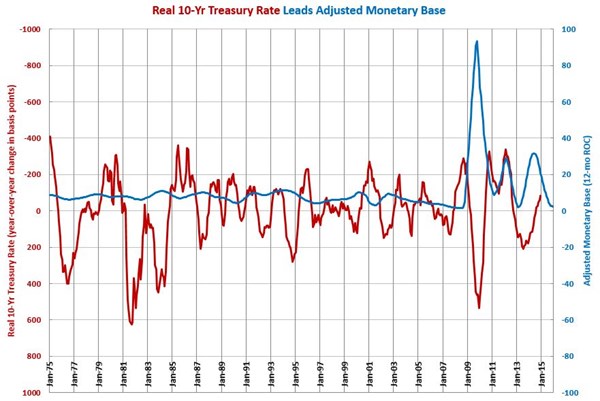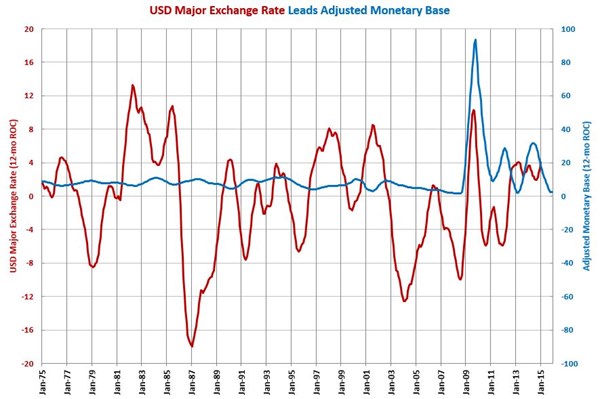Monetary Base Rises Above $4 Trillion Again in January
After the announcement that QE was over, the monetary base for two months. But, in the following two months, the monetary base increased and is back over $4 trillion.
In January 2015, the monetary base was $4.037 trillion dollars. This is still below the peak levels for the monetary base in August and September of last year. The January 2015 level was 7.7% more than it was in January 2014. The month-over-month rate of change in the monetary base has accelerated each of the last two months. However, the annual rate of change continued to decelerate. At the end of January, the annual rate of change was 18.4%, which was the slowest rate of growth since October 2013. If the Fed keeps the monetary base at its present level, then the annual rate of change would fall to 2.3% by the end of 2015. The annual rate of growth has been slower in only two months since August 2008. Eventually, the rate of growth in the monetary base must slow to more normal levels, if not stop outright. But, it's hard to imagine the Fed allowing the rate of growth to slow this much given what has happened in the last seven years and the recent monetary expansions of other major economies.
Historically, changes in the monetary base lead changes in capital equipment spending by about two years. Therefore, the money supply is pointing to strong growth in machine tool consumption in 2015. Based on the trend in money supply, the peak rate of growth in capital equipment spending should occur in late 2015 or early 2016. Then, capital equipment spending likely contract in 2016 and possibly in 2017. But, this is based on just one leading indicator. You can see how the monetary base leads various machine tool sales and consumption data as well as primary plastics processing equipment at our monetary page.
The real 10-year treasury rate is a good leading indicator for the adjusted monetary base. From early 2012 to the middle of 2013, the 10-year treasury was increasing at a rapid rate. I think this will correspond to a significantly slower rate of growth in the monetary base from June 2014 until sometime in the first half of 2015 (or, however long the Fed will be able to stand a shrinking economy in terms of GDP and perhaps a falling stock market).
Also, the U.S. dollar major exchange rate (the USD compared to the other six major currencies of the world) and the U.S. dollar broad exchange rate (the USD compared to all world currencies) appear to be good leading indicators of the U.S. monetary base. The US dollar against the other major currencies of the world is growing at an accelerating rate. Also, it is growing at its fastest annual rate since late 2009. The same is true of the U.S. dollar against all world currencies.
The current trend in the 10-year U.S. Treasury rate and exchange rates are clearly pointing toward accelerating growth in the monetary base. The question is will the Fed raise interest rates and slow the monetary base down before succumbing to the pressure pump out more money once again?




.JPG;width=70;height=70;mode=crop)